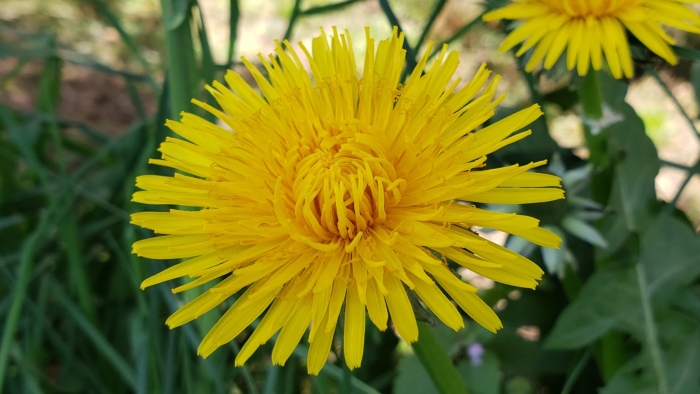Red-Seeded Dandelion
(Taraxacum erythrospermum)
Red-Seeded Dandelion (Taraxacum erythrospermum)
/
/

© Gavin Slater
CC BY 4.0
Image By:
© Gavin Slater
Recorded By:
Copyright:
CC BY 4.0
Copyright Notice:
Photo by: © Gavin Slater | License Type: CC BY 4.0 | License URL: http://creativecommons.org/licenses/by/4.0/ | Uploader: littlelegofan | Publisher: iNaturalist |























Estimated Native Range
Summary
Taraxacum erythrospermum, commonly known as the red-seeded dandelion, is a perennial herb that is often mistaken for the common dandelion, Taraxacum officinale. It is distinguished by its reddish-brown seed bases and consistently triangular leaf lobes. Native to Eurasia, it has been introduced to North America where it thrives in a variety of habitats including meadows, lawns, and disturbed sites. This species typically forms a rosette of leaves close to the ground and produces yellow flowers on hollow stalks that bloom from early spring to late fall, depending on the climate.
The red-seeded dandelion is valued for its hardiness and adaptability, often used in wildflower meadows and naturalistic plantings. It is also recognized for its edible leaves and roots, which can be used in salads or as a coffee substitute, respectively. In cultivation, it prefers full sun to partial shade and can tolerate a wide range of soil types, though it thrives in moist, well-drained soils. While it is low-maintenance, it can become problematic due to its prolific seed production and potential to become invasive. Gardeners should be cautious about introducing it to areas where it may spread uncontrollably.CC BY-SA 4.0
The red-seeded dandelion is valued for its hardiness and adaptability, often used in wildflower meadows and naturalistic plantings. It is also recognized for its edible leaves and roots, which can be used in salads or as a coffee substitute, respectively. In cultivation, it prefers full sun to partial shade and can tolerate a wide range of soil types, though it thrives in moist, well-drained soils. While it is low-maintenance, it can become problematic due to its prolific seed production and potential to become invasive. Gardeners should be cautious about introducing it to areas where it may spread uncontrollably.CC BY-SA 4.0
Plant Description
- Plant Type: Herb
- Height: 0.5-1.5 feet
- Width: 0.5-1.5 feet
- Growth Rate: Moderate
- Flower Color: Yellow
- Flowering Season: Spring, Summer, Fall
- Leaf Retention: Deciduous
Growth Requirements
- Sun: Full Sun
- Water: Medium
- Drainage: Fast, Medium, Slow
Common Uses
Bee Garden, Low Maintenance
Natural Habitat
Native to Eurasia and found in meadows, lawns, and disturbed sites
Other Names
Common Names: Wine Dandelion, Rock Dandelion, Pissenlit À Graines Rouges
Scientific Names: , Taraxacum erythrospermum, Leontodon erythrospermum, Leontodon erythrospermum, Leontodon laevigatus, Leontodon taraxacum subsp. laevigatus, Leontodon taraxacum var. laevigatus, Taraxacum austriacum, Taraxacum austriacum var. austriacum, Taraxacum austriacum var. denubium
GBIF Accepted Name: